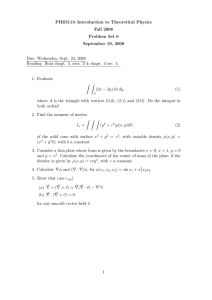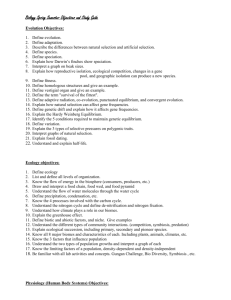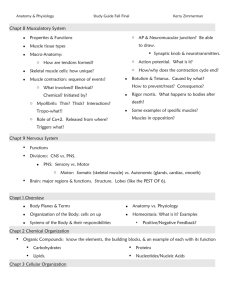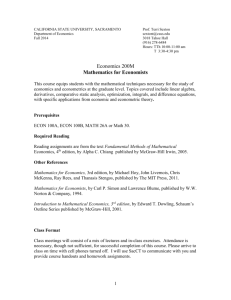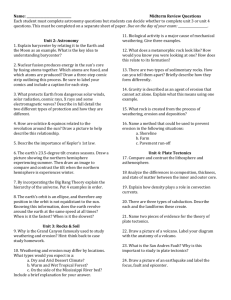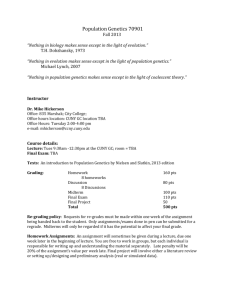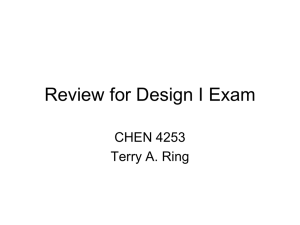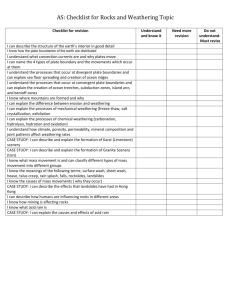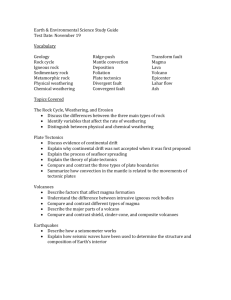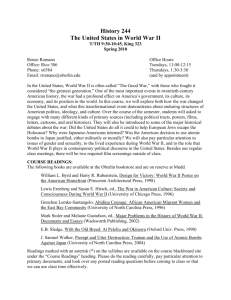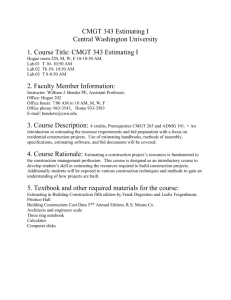final exam study guide - Doral Academy Preparatory
advertisement
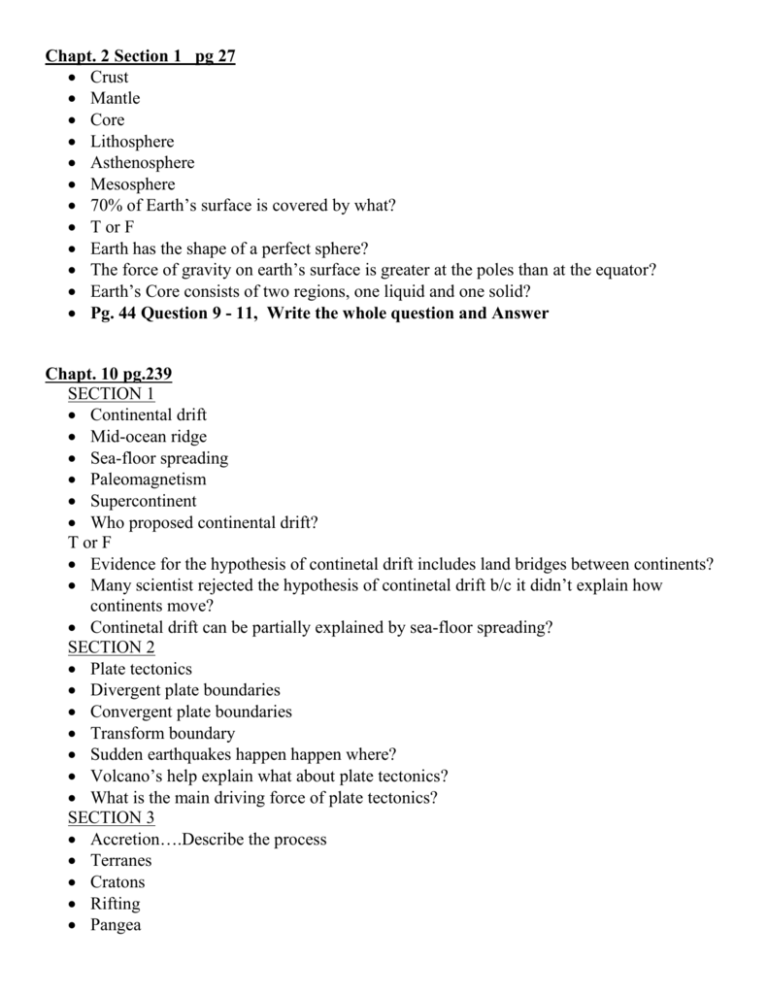
Chapt. 2 Section 1 pg 27 Crust Mantle Core Lithosphere Asthenosphere Mesosphere 70% of Earth’s surface is covered by what? T or F Earth has the shape of a perfect sphere? The force of gravity on earth’s surface is greater at the poles than at the equator? Earth’s Core consists of two regions, one liquid and one solid? Pg. 44 Question 9 - 11, Write the whole question and Answer Chapt. 10 pg.239 SECTION 1 Continental drift Mid-ocean ridge Sea-floor spreading Paleomagnetism Supercontinent Who proposed continental drift? T or F Evidence for the hypothesis of continetal drift includes land bridges between continents? Many scientist rejected the hypothesis of continetal drift b/c it didn’t explain how continents move? Continetal drift can be partially explained by sea-floor spreading? SECTION 2 Plate tectonics Divergent plate boundaries Convergent plate boundaries Transform boundary Sudden earthquakes happen happen where? Volcano’s help explain what about plate tectonics? What is the main driving force of plate tectonics? SECTION 3 Accretion….Describe the process Terranes Cratons Rifting Pangea Panthalassa Laurasia & Gondwanaland PG. 262 Questions 9-16 Chapt. 12 SECTION 1 Define: Earthquakes Elastic rebound Focus Epicenter Body wave Surface wave P wave S wave Fault zone Love wave Rayleigh wave Shadow zone SECTION 2 Seismograph Seismogram Magnitute Intensity Richter scale Describe the sensing equipment used to record earthquakes. Compare Richter Scale VS Mercalli scale in describing an earthquake. Pg. 310 Questions 9-15 Chapt. 13 SECTION 1 Define: Magma Volcanism Lava Volcano Hot spot What structure forms when magma solidifies beneath Earth’s surface called? SECTION 2 Mafic Felsic Pyroclastic material Caldera List and describe the Types of Pryroclastic Material Describe and Draw the 3 types of volcano’s Shield Volcanoes Cinder Cones Composite Volcanoes Questions pg. 332 8-15 Chapt. 5 SECTION 1 Mineral Silicate mineral Nonsilicate mineral Crystal Silicon-oxygen tetrahedron Questions 9-12 page 116 Chapt. 6 Section 1 pg 125 Define: Rock Rock Cycle What are the 3 major types of rocks? Explain each and how it forms 1. Igneous 2. Sedimentary 3. Metamorphic Bowens reaction series….explain it. Chapt. 14 Section 1 & 2 pg. 343 Define Weathering Mechanical weathering Ice wedging Abrasion Chemical weathering Oxidation Hydrolysis Carbonation Acid precipitation SECTION 2 Differential weathering Where do the slowest rates of weathering occur? Do Questions 9, 10, 11, 12, 17 & 19 pg. 366 Chapt. 26 & 27 & 28 STUDY PACKETS Viewing the Universe & Movements of the Earth Make sure you fully understand revolution, rotation, aphelion, perihelion, solstice, equinox Seasons Inner Planets Outer planets Formation of Earth & Atmosphere Models of solar system, Kepler, Newton, Copernicus, Galileo Features of the Moon : maria, craters Satellite Eclipses: solar & lunar Apogee Perigree Questions on (pg. 676) 7-15 Questions on (pg 710) 8-18 Questions on (pg. 746) 9, 10, 11, 12, 13 Chapt. 29 pg. 775 What is a star? What is nuclear fusion? What do astronomers use to separate light into different colors? Define Spectrum. What are the 3 types of spectra? 1 2 3 Inner layers of a star are _____________ while the outer layers are ________________. Which color is the hottest temperature BLUE ORANGE OR RED Which color is the coolest? BLUE ORANGE OR RED What is the most COMMON element in a star? What is the 2nd most common element? The surface temperature is indicated by the stars ________________. Define ACTUAL MOTION Define APPARENT MOTION Define DOPPLER EFFECT What is a light-year? What is parallax? Define Apparent magnitude Define Absolute Magnitude SECTION 2 True or False a star exists for billions of years? Define: Luminosity What is the H-R diagram? The temperature of a stars surface is plotted on the __________________ axis and the luminosity is plotted on the ___________________ axis. Highest temperature goes to the ____________________ and highest luminosities at the _________. Most stars fall into the ________________________sequence stars. An example is our SUN. A star begins in a _____________________ which is a Describe GIANT STARS Describe SUPERGIANTS…..Whats so special about Betelgeuse? What is a Planetary Nebula? What is a white dwarf?
